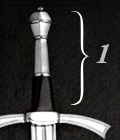 If you want to talk swords, you’ve got to know the lingo. In an effort to be as specific as possible, we use technical terms in our product descriptions, so this article is to help you wrap your head around some sword basics, in particular the function and structure of each of its parts.
If you want to talk swords, you’ve got to know the lingo. In an effort to be as specific as possible, we use technical terms in our product descriptions, so this article is to help you wrap your head around some sword basics, in particular the function and structure of each of its parts.
Perhaps you’ve come across sword-related vocabulary you weren’t familiar with. For example, do you know what “ricasso” or “chape” mean? If not, then you’re in good company, as most people are at a loss with such technicalities. If you do know what they are, then you’re a step ahead of the game. In any case, it won’t hurt to have a look at our illustrations to see what swords are all about.
As shown in the first picture, a sword is divided into two main parts: the hilt (1) and the blade (2).
The hilt (1) consists of the grip and pommel, while the blade (2, 4) and the tang (3) form one continuous piece of steel shaped as required. The grip, in the form of handle plates for example, is fastened to the tang (3) with bolts or rivets.

1 | The Hilt
The hilt consists of the grip, pommel and sometimes a hand guard, cross-guard or basket.
2 + 4 | The Blade
The blade is what makes the sword a weapon. It usually has two side faces with a sharp edge and a back edge. Many swords are double-edged, that is, they have two sharp edges.
3 | The Tang
Usually this part of the blade is not visible. In contrast to the blade, the tang is covered by the cross-guard, grip and pommel. A well built tang is essential for the overall stability of the sword.
5 | The Pommel
The pommel is essential for a more equal distribution of weight and good manageability.
If the sword is top-heavy the weight of the pommel balances it out. The pommel is screwed onto or riveted to the tang. Rivets are more stable than bolts, but when riveted the pommel is more difficult to replace.
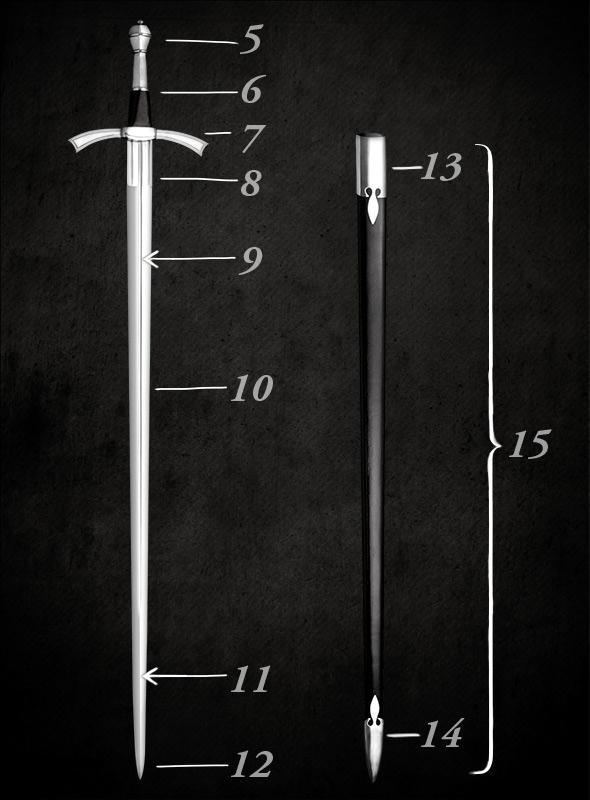 6 | The Grip
6 | The Grip
Grips come in a variety of designs. In most cases handle plates of wood are wrapped in leather and wire. The grip is tremendously important as it is where the sword becomes an extension of the human arm. A secure grip influences the sword’s overall manageability.
7 | The Cross-Guard
The cross-guard protects your hands from injury. It arose from shorter hand guards common in the Roman gladius or spatha (see below).
8 | The Ricasso
The ricasso is the smooth-edged base of the blade just above the cross-guard. It allows for two-handed techniques in which one hand is on the grip and the other on the ricasso.
9 | The Fuller
The fuller is a groove along the blade that makes the sword lighter and more stable. From a single, flat and wide fuller to several deep and narrow ones, fullers run the gamut—or aren’t present at all as many swords don’t have one.
10 | The Sharp Edge
As opposed to the back edge, the sharp edge is the side of the sword that has been sharpened and is used for cutting. When both sides are sharp, the sword is double-edged.
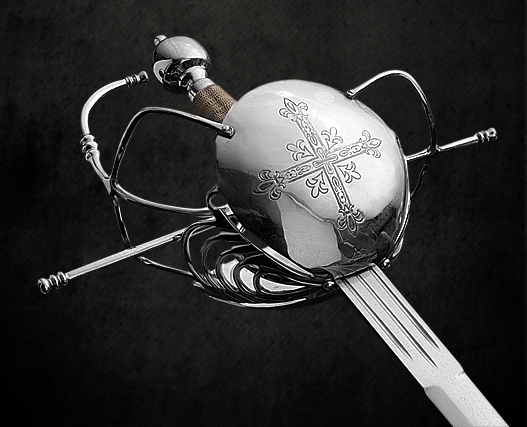 11 | The Central Ridge
11 | The Central Ridge
Blades with diamond cross-sections have a central ridge that runs along the middle of the blade until just before the point.
12 | The Point
The point marks the end of the blade and can be rounded.
13 | The Chape
The chape is the metal plate at the mouth of the scabbard where the sword is first inserted.
14 | The Throat
The throat is the metal plate at the bottom of the scabbard where the sword point rests.
15 | The Scabbard
Scabbards are usually made of leather, sometimes of metal, and serve as a holder for storing and transporting the sword.
A very brief history of swords from antiquity to the early modern period
The gallery below shows how swords have changed over the centuries. While their basic construction (blade, hilt) has remained the same, they have become more elaborate in their design, in particular the evolution of the hand guard from the cross-guard to the artful rapier basket. Many developments did not follow the fashion sensibilities of their respective generations but rather the changing demands of warfare in each epoch.
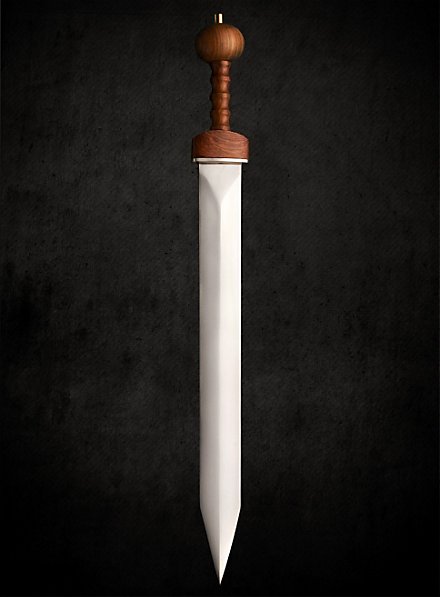

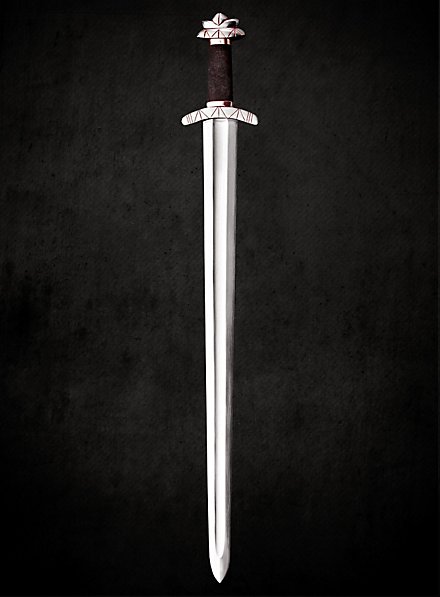
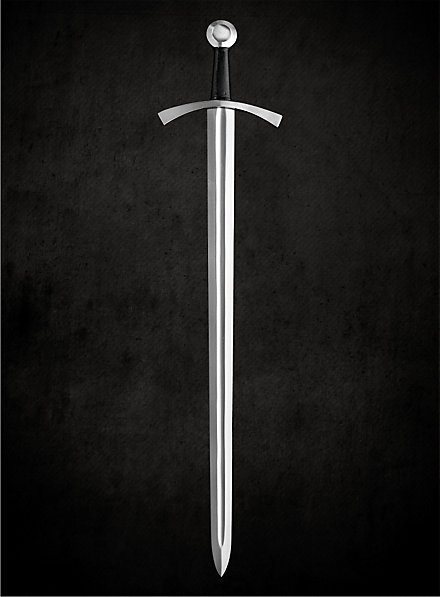

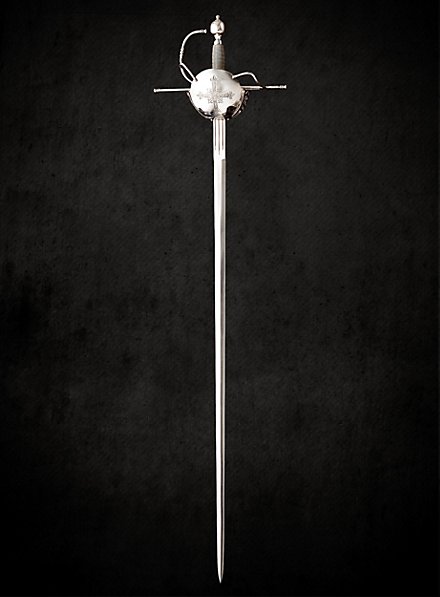
This series of photos shows a progression toward an ever purer thrusting sword, the rapier. With the advancement of plate armor in the 14th and 15th centuries, sword blades used to date saw their demise as their thrusting capacity no longer posed much danger to armored opponents. A long, slender, and most importantly, pointed blade was needed in order to jab between plates with precision. This circumstance coupled with the rise of gunpowder at that time caused bulky plate armor to fall out of fashion. In its place fencing became standard battle conduct, except of course when gunpowder was involved.
 If you want to talk swords, you’ve got to know the lingo. In an effort to be as specific as possible, we use technical terms in our product descriptions, so this article is to help you wrap your head around some sword basics, in particular the function and structure of each of its parts.
If you want to talk swords, you’ve got to know the lingo. In an effort to be as specific as possible, we use technical terms in our product descriptions, so this article is to help you wrap your head around some sword basics, in particular the function and structure of each of its parts.







